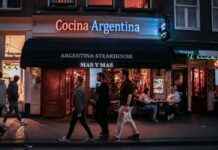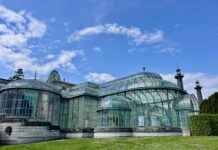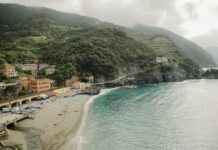«This set is the most beautiful in France after that of the Louvre», highlights Dominique Jacquot, chief curator of the Museum of Fine Arts in Strasbourg.
These 20 paintings, including a landscape by Alfred Sisley, and seven objects, respond to the acronym MNR for «National Museums Recovery». It is the «remainder of works recovered on the territories of the Reich in 1945 because they came from France», explains Thibault de Ravel d’Esclapon, lecturer at the Faculty of Law of the University of Strasbourg and co- curator of this exhibition opened on October 22.
At the end of the Second World War, 61,000 works from France were recovered in Germany and Austria. More than 45,000 were quickly returned to their owners, others were sold by the State.
Unclaimed, about 2,200 were selected and became «MNR» placed under the responsibility of the State.
If the history of all of them is not known, «many of these works belonged to looted Jewish families», indicates Thibault de Ravel d’Esclapon. Some may have been the subject of unrestricted sales to the occupant or of orders.
These MNRs do not belong to the museums where they are exhibited, nor to the State which is their depositary.
– ‘Moral duty’ –
Normally, the 27 Strasbourg MNRs are exhibited in four museums in the city. For the first time, they are gathered in one place.
«It’s an exhibition that responds to a scientific mission, a legal mission but above all a moral duty,» said Paul Lang, director of the museums of Strasbourg.
Since 1999, 112 MNR works have been returned to their owners and this was again the case last February in Paris. «It’s a story that is still part of the present and the future,» says Mr. de Ravel d’Esclapon.
But time limits the chances of finding who they belonged to before the war, hence the interest in getting people talking about them. In the hope that this will revive, in descendants, the memory of a work seen in an old family photo or in the inventory of an estate.
For Paul Lang, the «ideal objective» of the exhibition would be that at its end, in May, all the MNR works kept in Strasbourg «return to the descendants of their legitimate owners». But he recognizes there «a wishful thinking», since since their arrival in the early 1950s, this has not happened for any of them.
Nevertheless «it is not and it will never be too late», insists the director of the museums.
– Rose Valland –
The catalog of all MNRs in France can be consulted on terminals or in paper version.
Among the works exhibited in Strasbourg, four were owned by Hermann Göring, including the painting «The Betrothed» by Lucas de Leyde, presented as the most important of the exhibition. The Marshal was the second largest buyer of works of art under Nazi Germany, behind those in charge of constituting the fund of the gigantic museum that Hitler planned to create in Linz, Austria.
Passionate about «art and heritage», Nelly van der Barnevelt, a 74-year-old former chartered accountant, came after being passionate about a documentary on Rose Valland, who, during the war, secretly took notes on the transfers of works by the Nazis, decisive information to find and restore the works.
«I wanted to see the paintings they had in Strasbourg and I’m not disappointed,» she explains.
The exhibition «Past, present, future of works recovered in Germany in 1945» is visible until May 15, 2023 at the Heitz gallery of the Palais Rohan.














